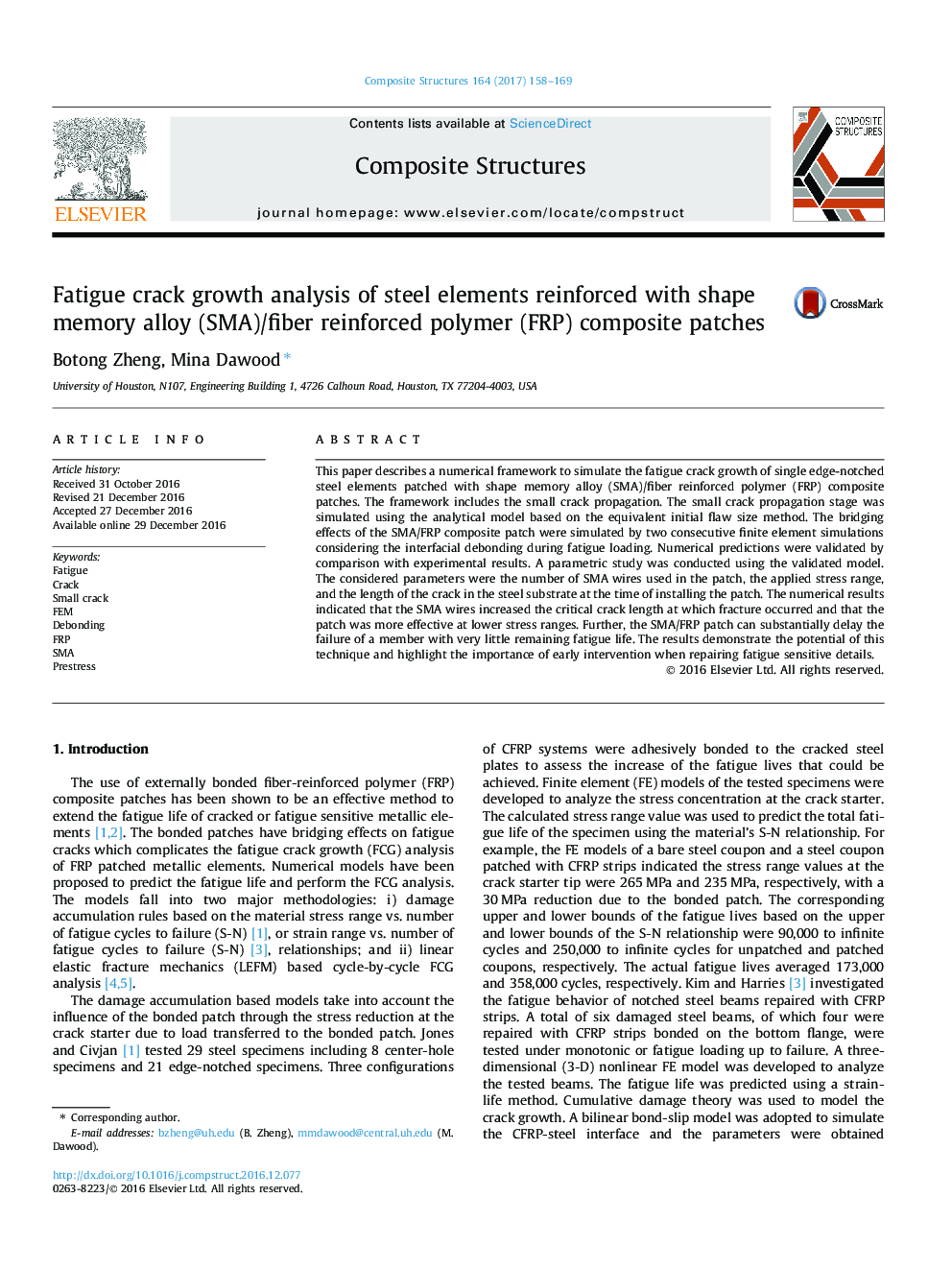| Article ID | Journal | Published Year | Pages | File Type |
|---|---|---|---|---|
| 4912199 | Composite Structures | 2017 | 12 Pages |
Abstract
This paper describes a numerical framework to simulate the fatigue crack growth of single edge-notched steel elements patched with shape memory alloy (SMA)/fiber reinforced polymer (FRP) composite patches. The framework includes the small crack propagation. The small crack propagation stage was simulated using the analytical model based on the equivalent initial flaw size method. The bridging effects of the SMA/FRP composite patch were simulated by two consecutive finite element simulations considering the interfacial debonding during fatigue loading. Numerical predictions were validated by comparison with experimental results. A parametric study was conducted using the validated model. The considered parameters were the number of SMA wires used in the patch, the applied stress range, and the length of the crack in the steel substrate at the time of installing the patch. The numerical results indicated that the SMA wires increased the critical crack length at which fracture occurred and that the patch was more effective at lower stress ranges. Further, the SMA/FRP patch can substantially delay the failure of a member with very little remaining fatigue life. The results demonstrate the potential of this technique and highlight the importance of early intervention when repairing fatigue sensitive details.
Related Topics
Physical Sciences and Engineering
Engineering
Civil and Structural Engineering
Authors
Botong Zheng, Mina Dawood,
